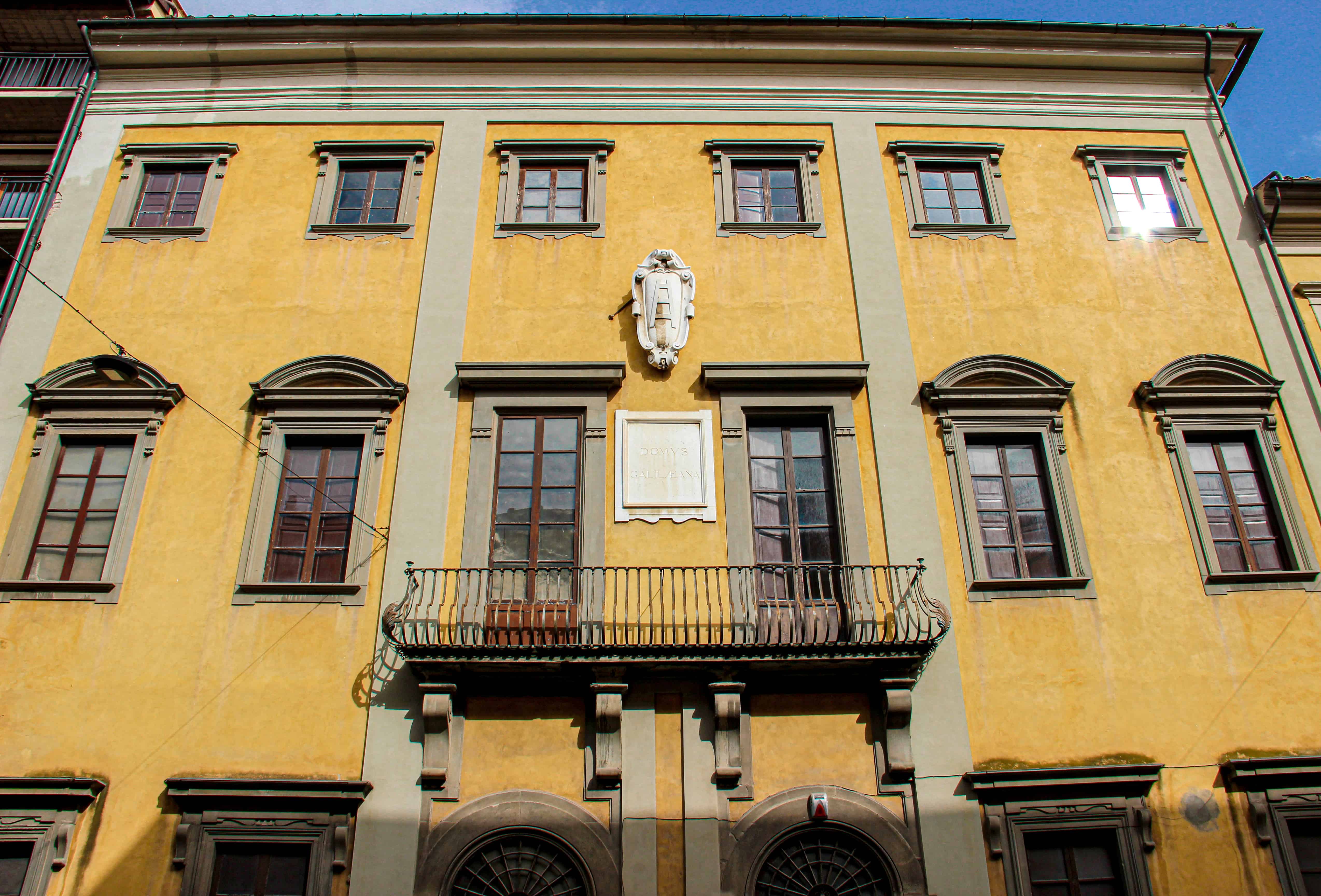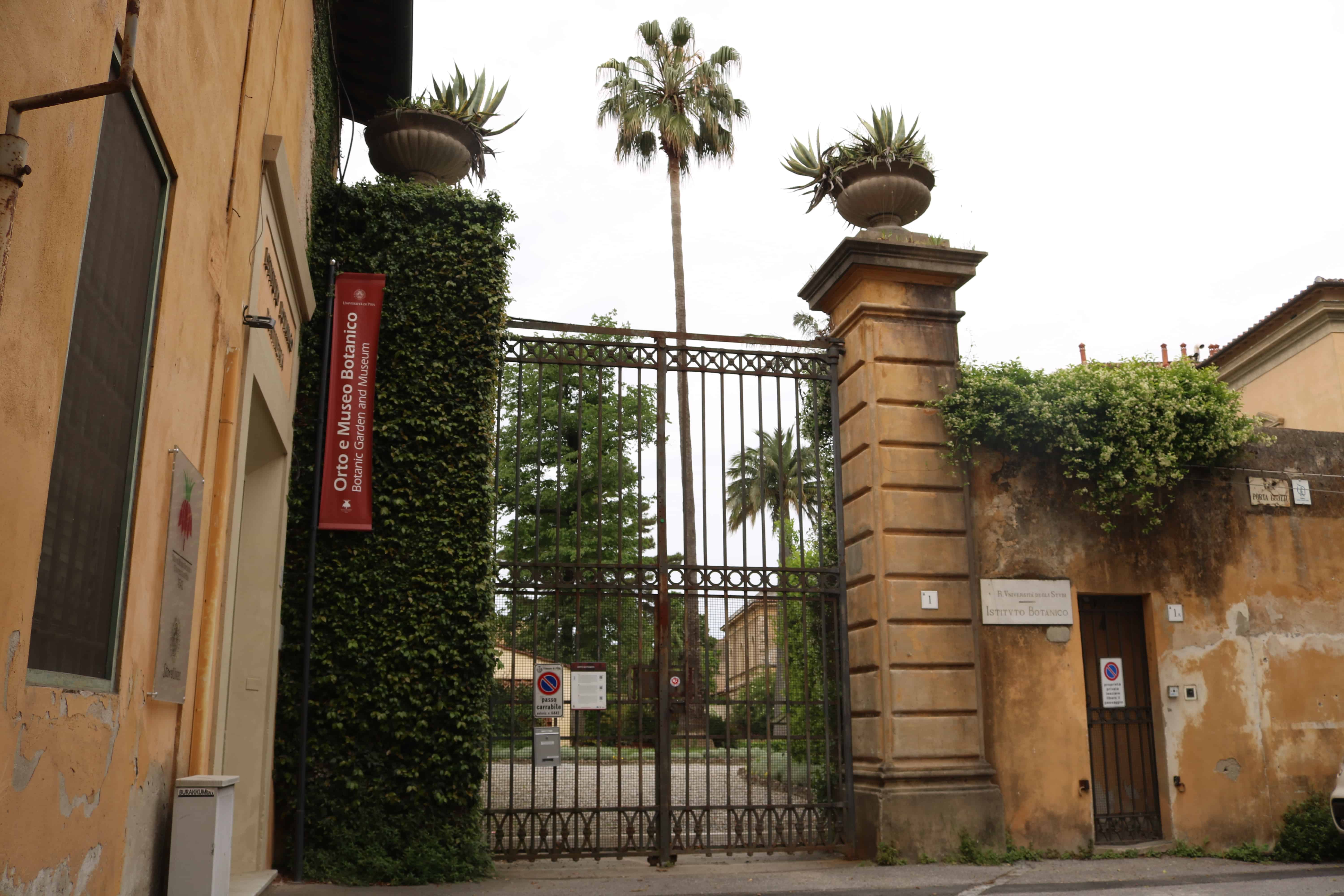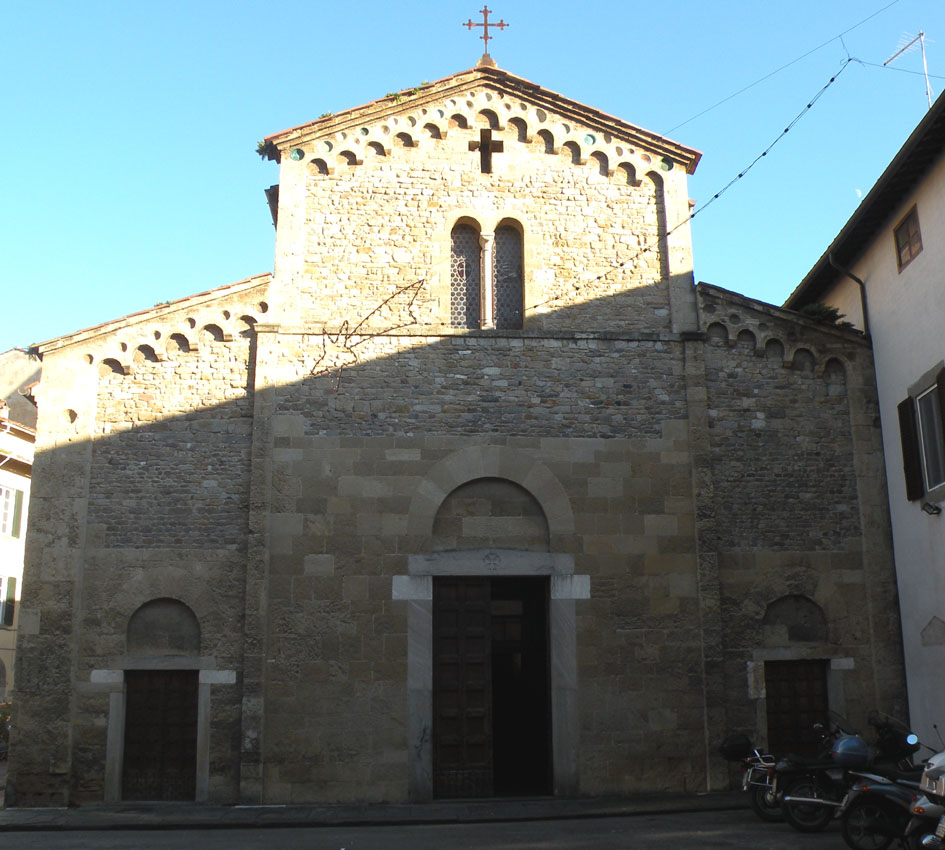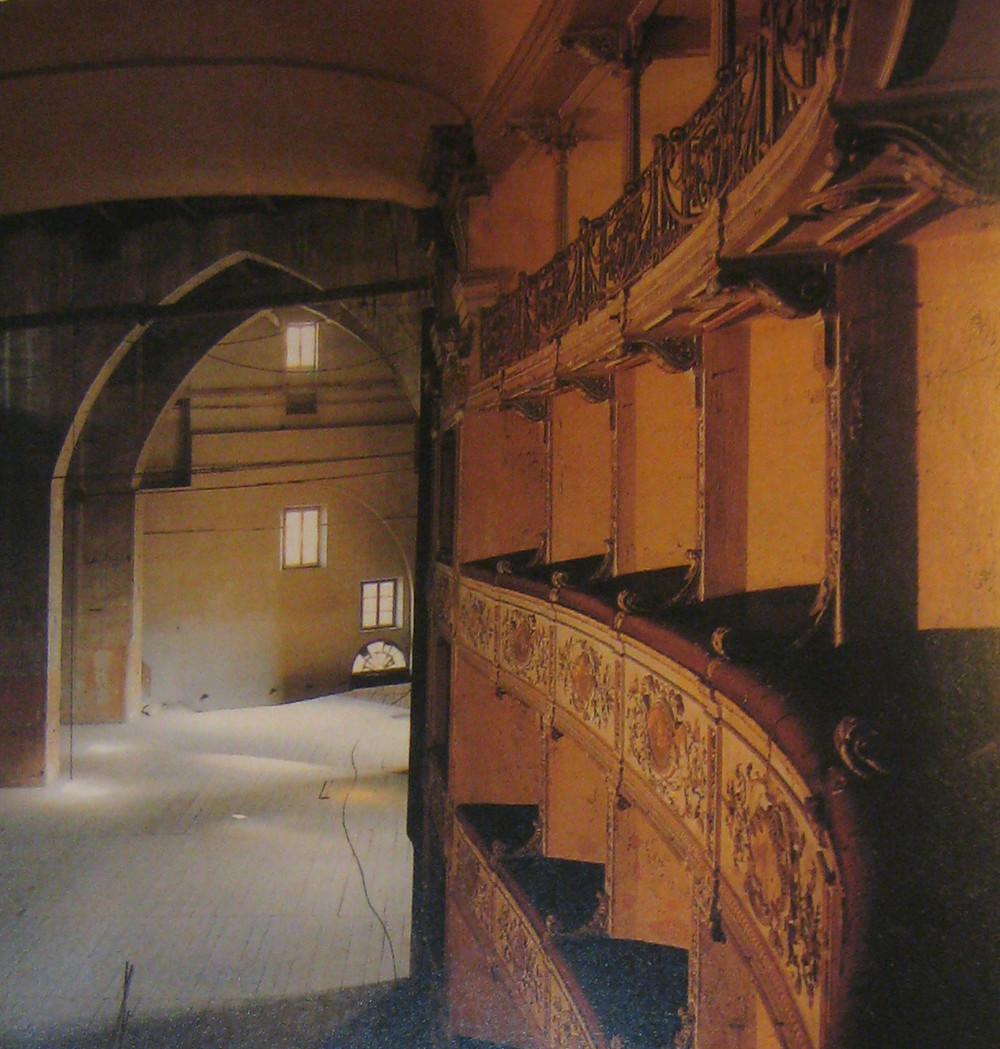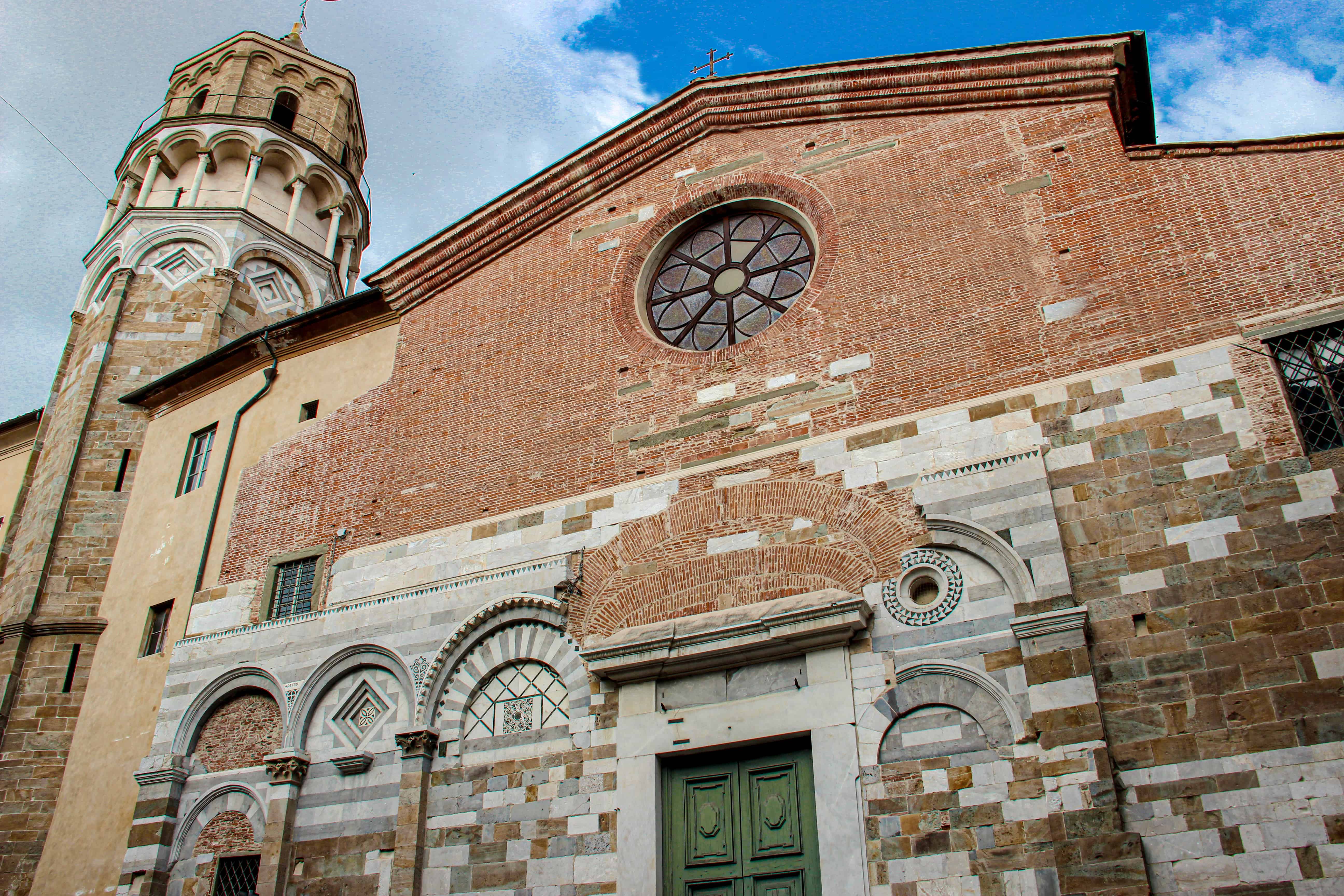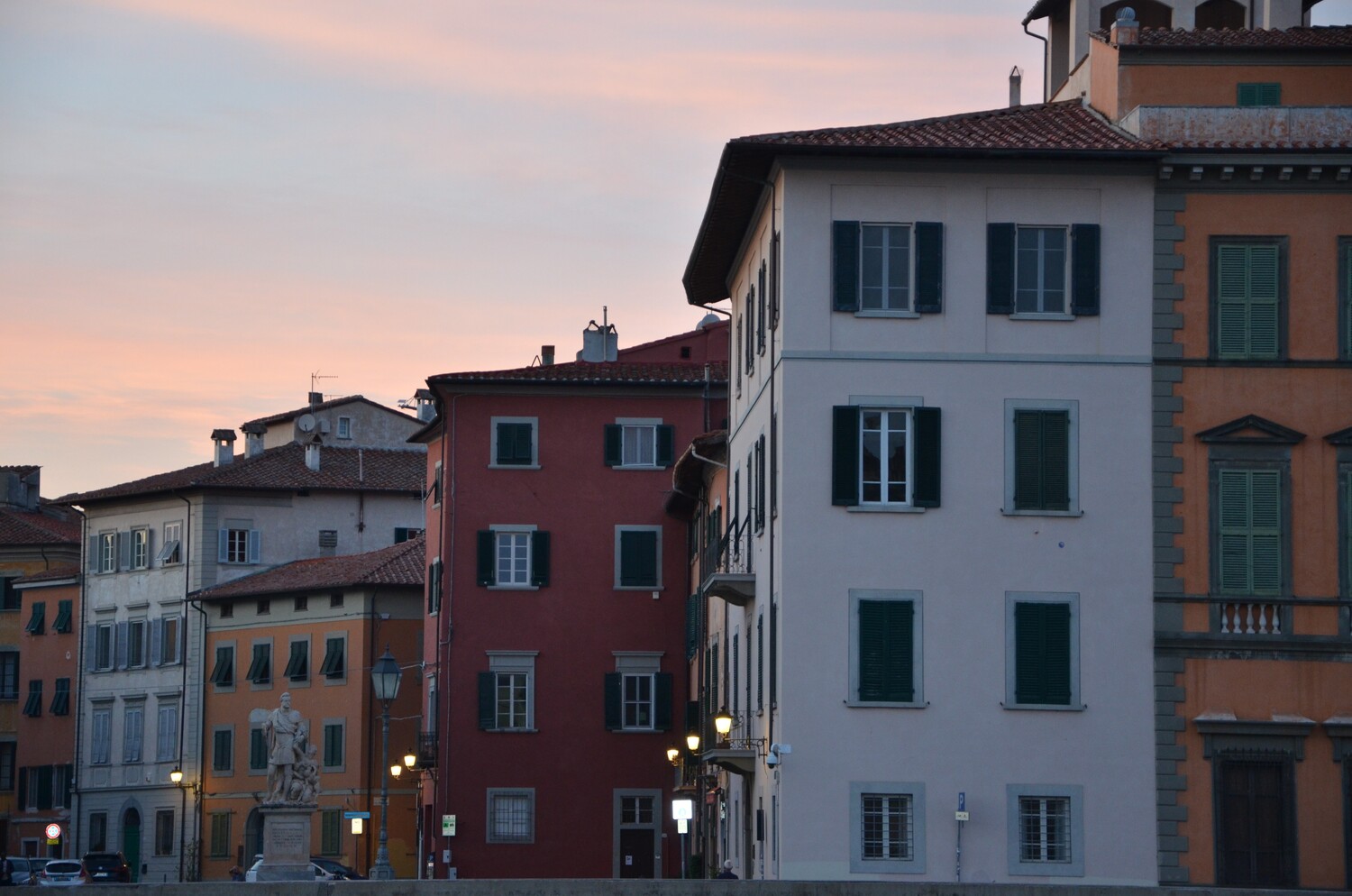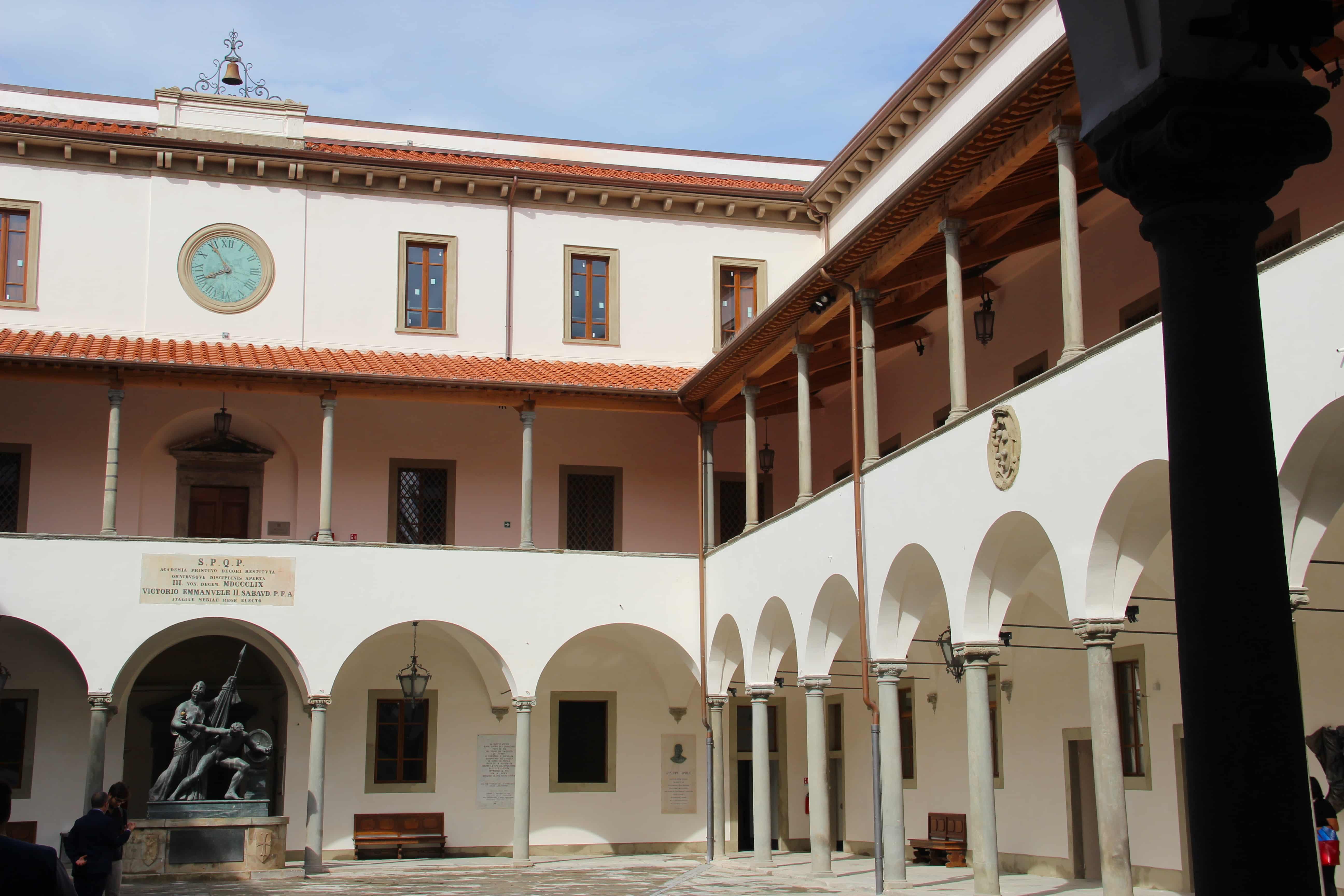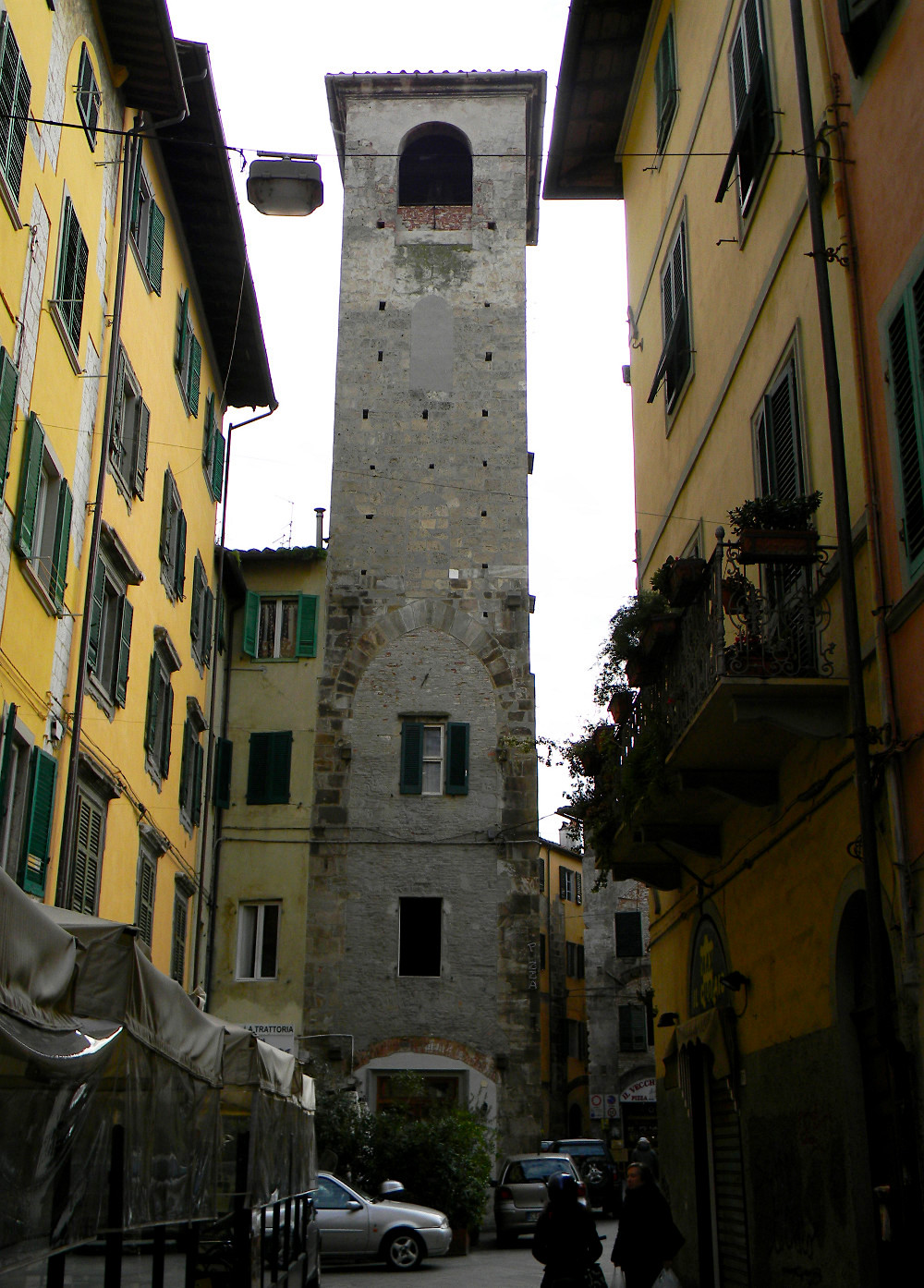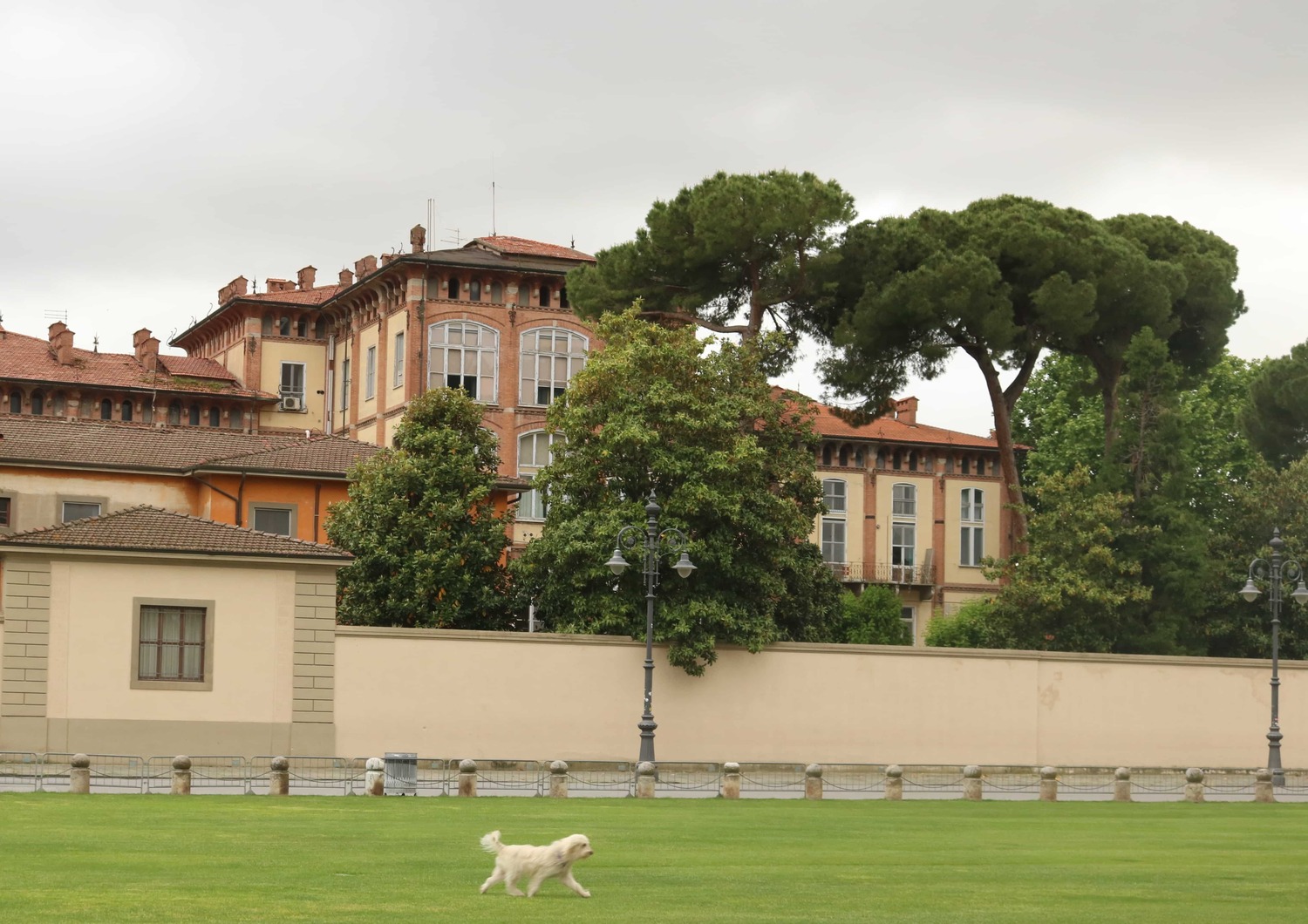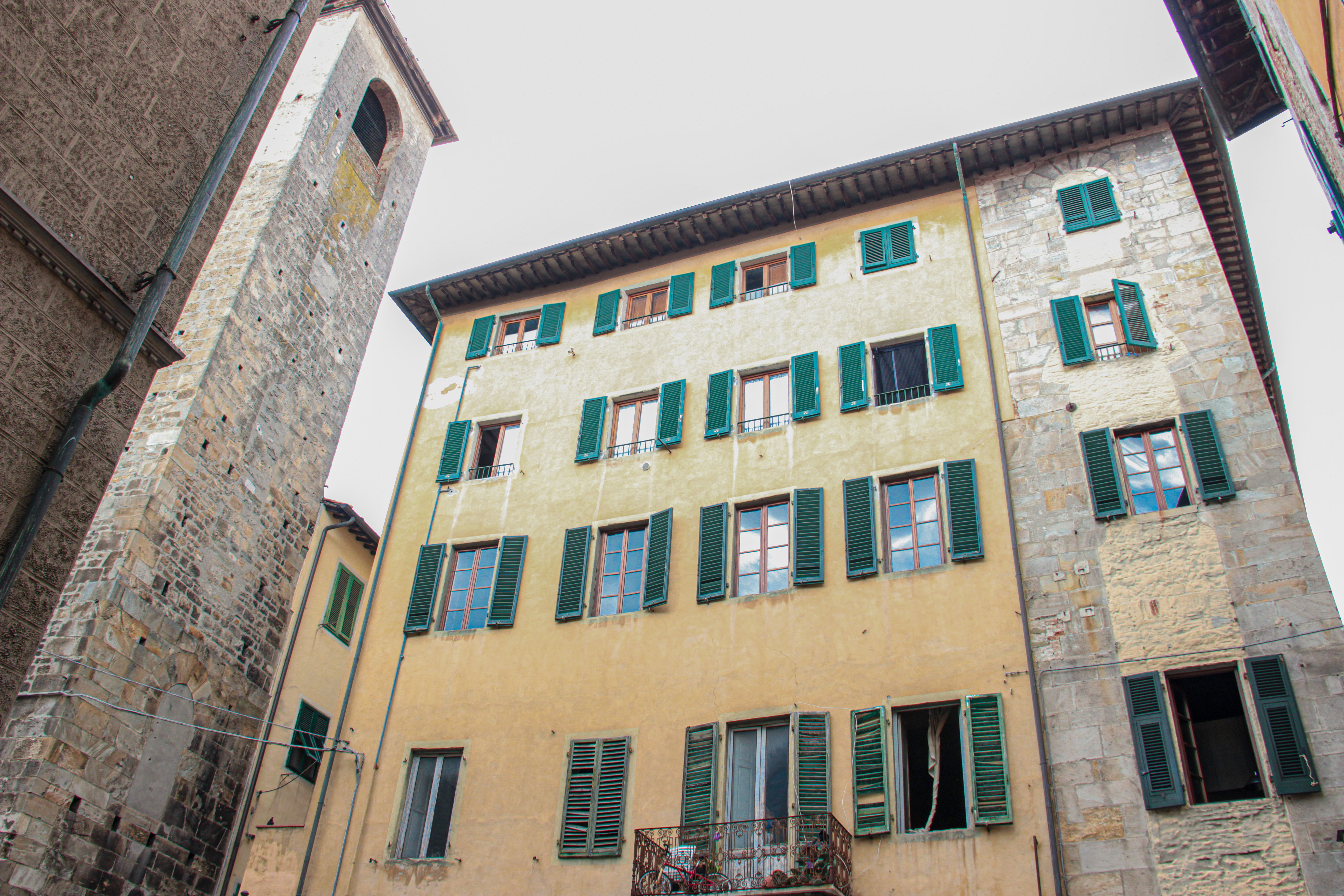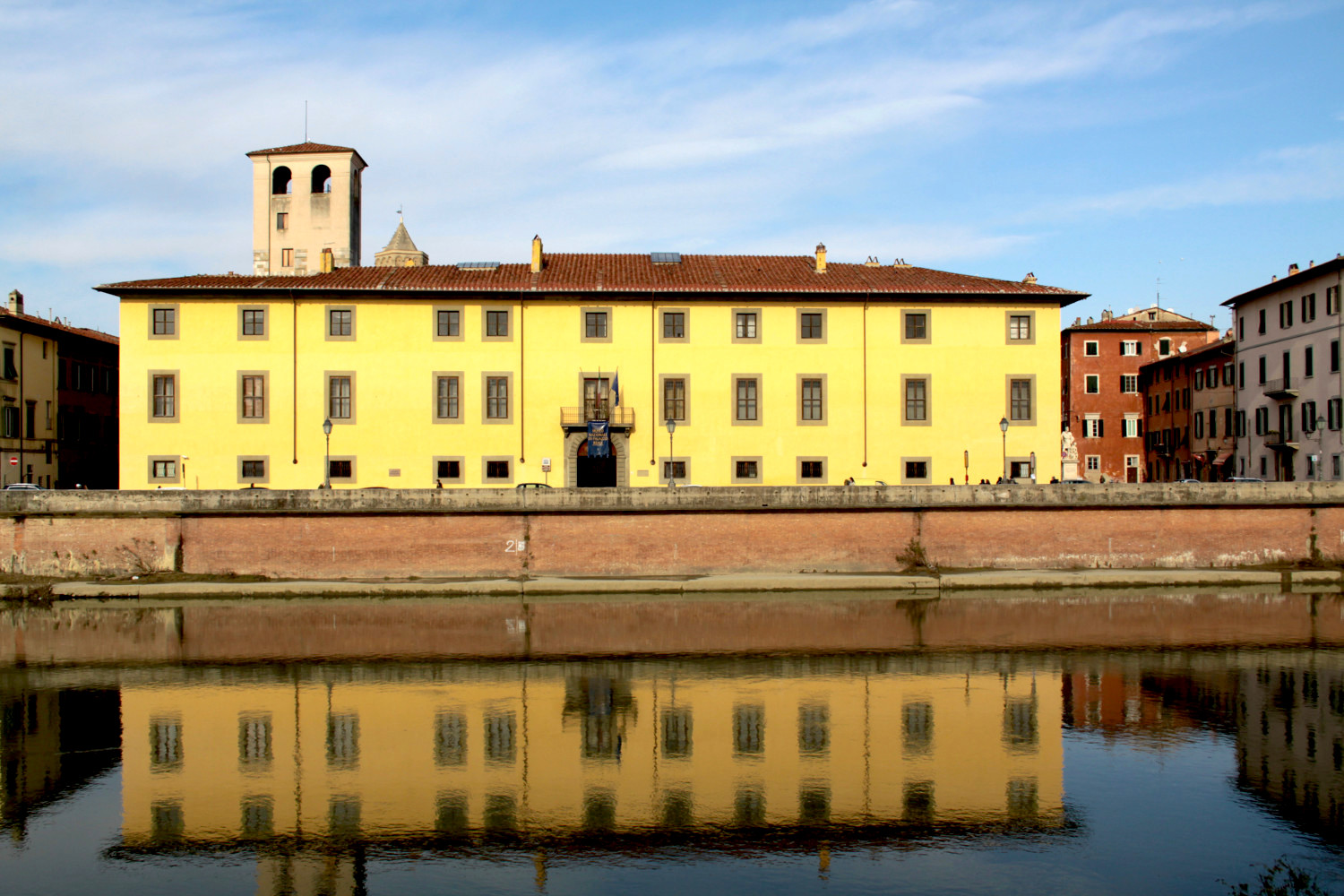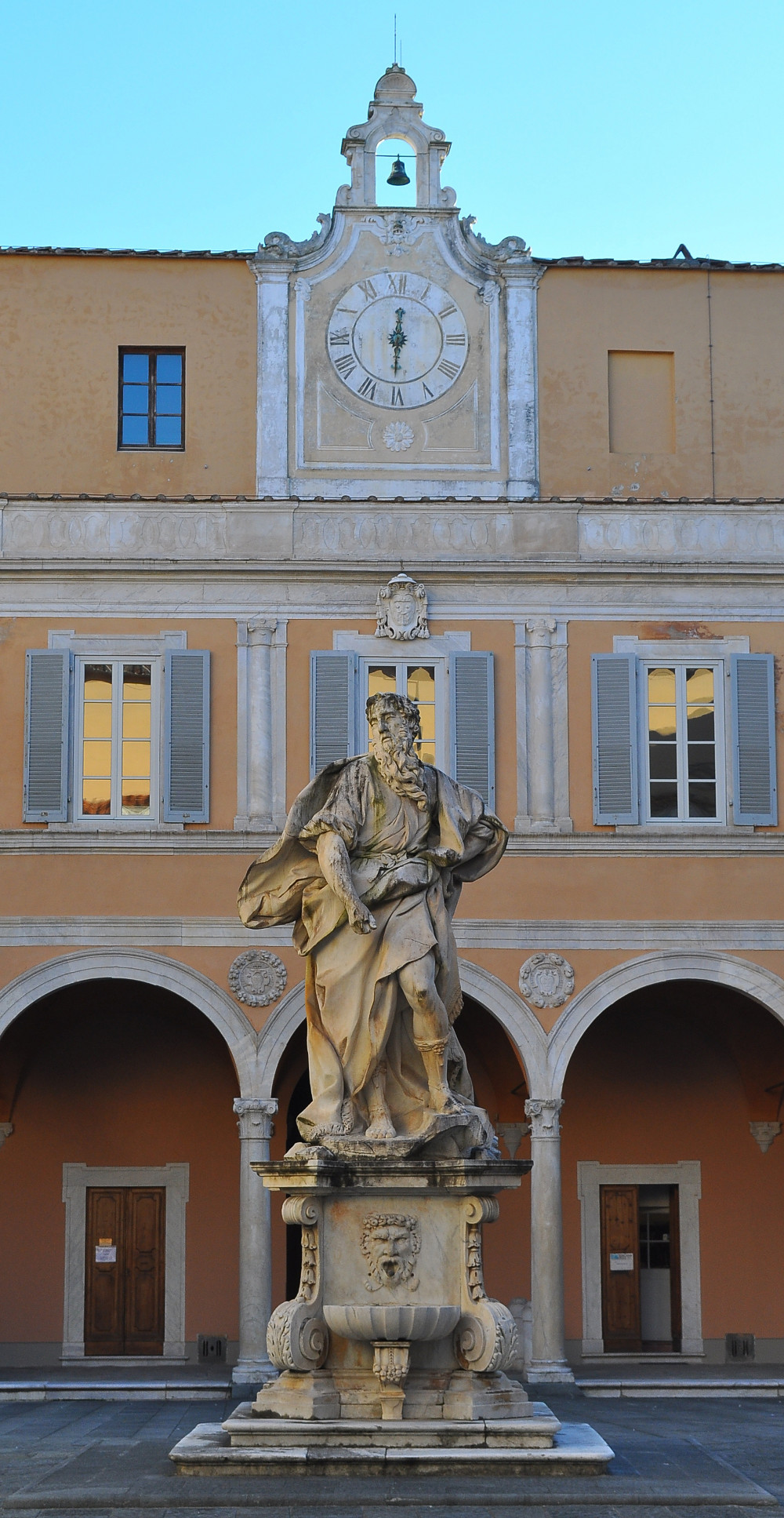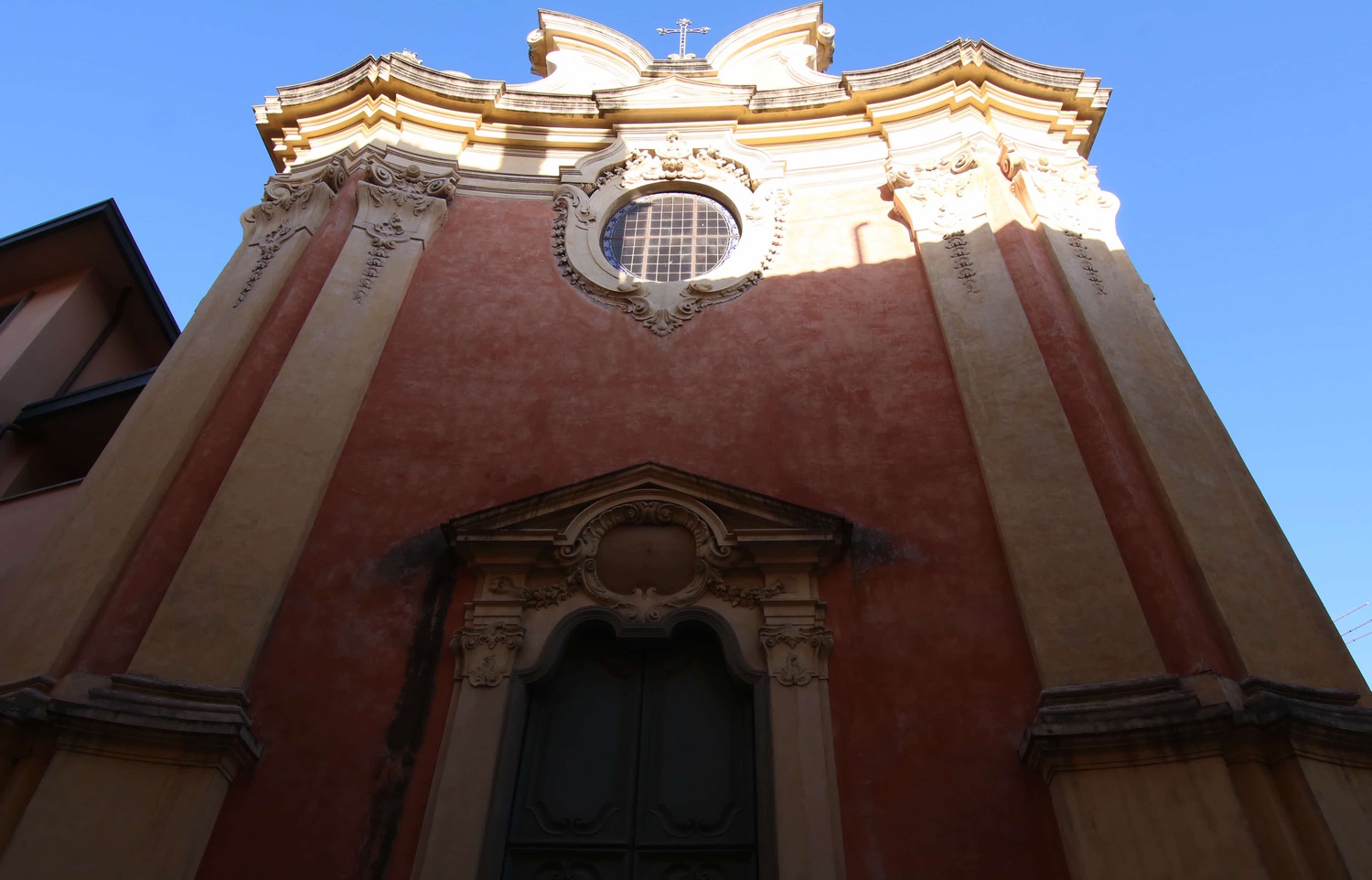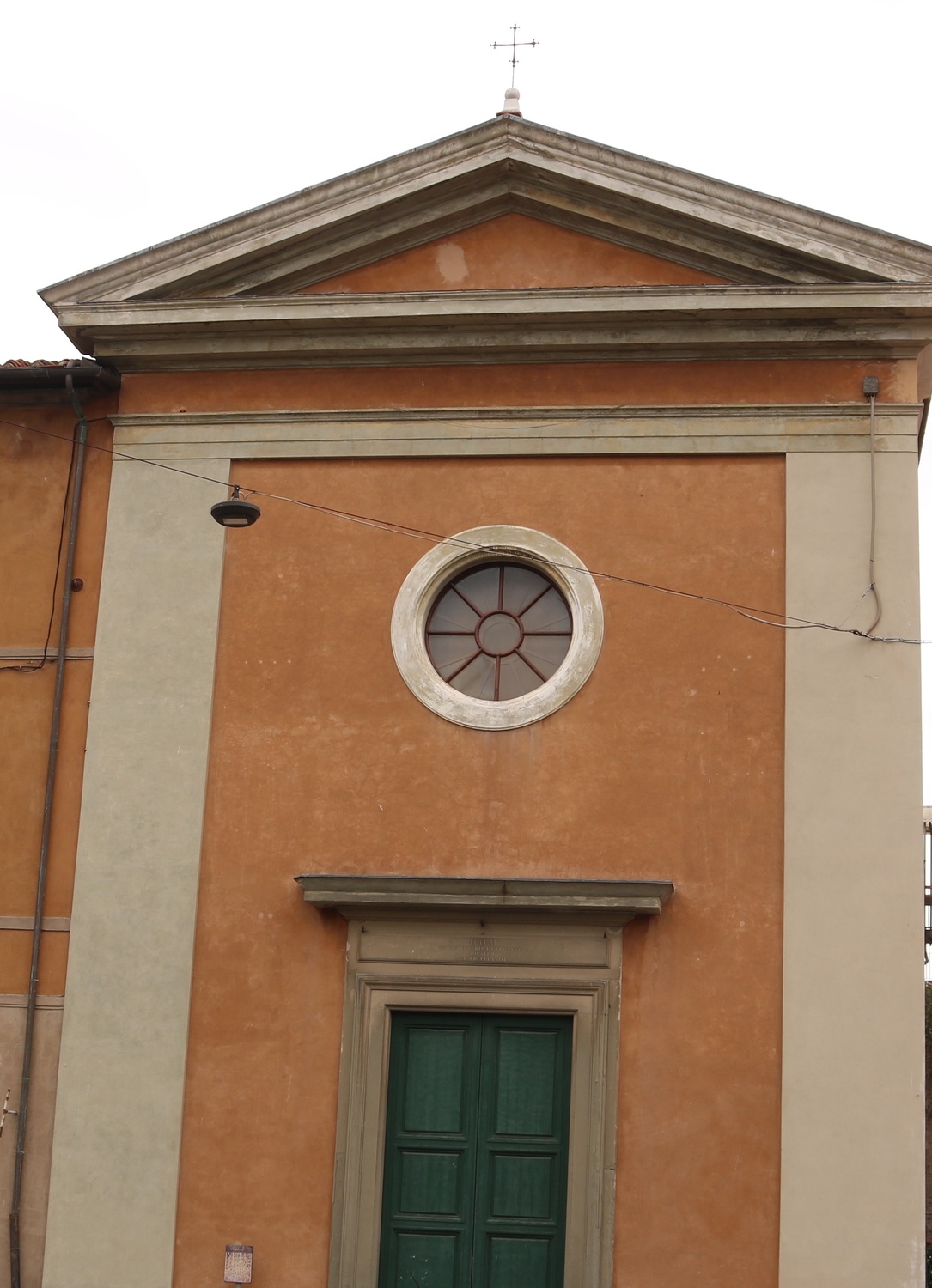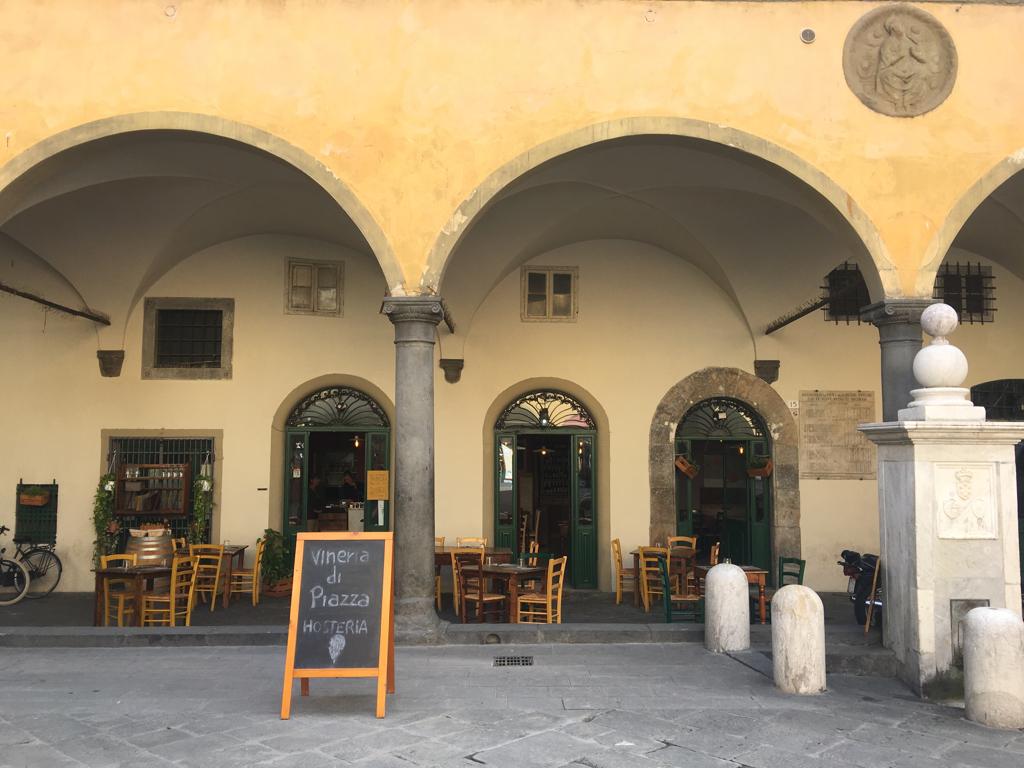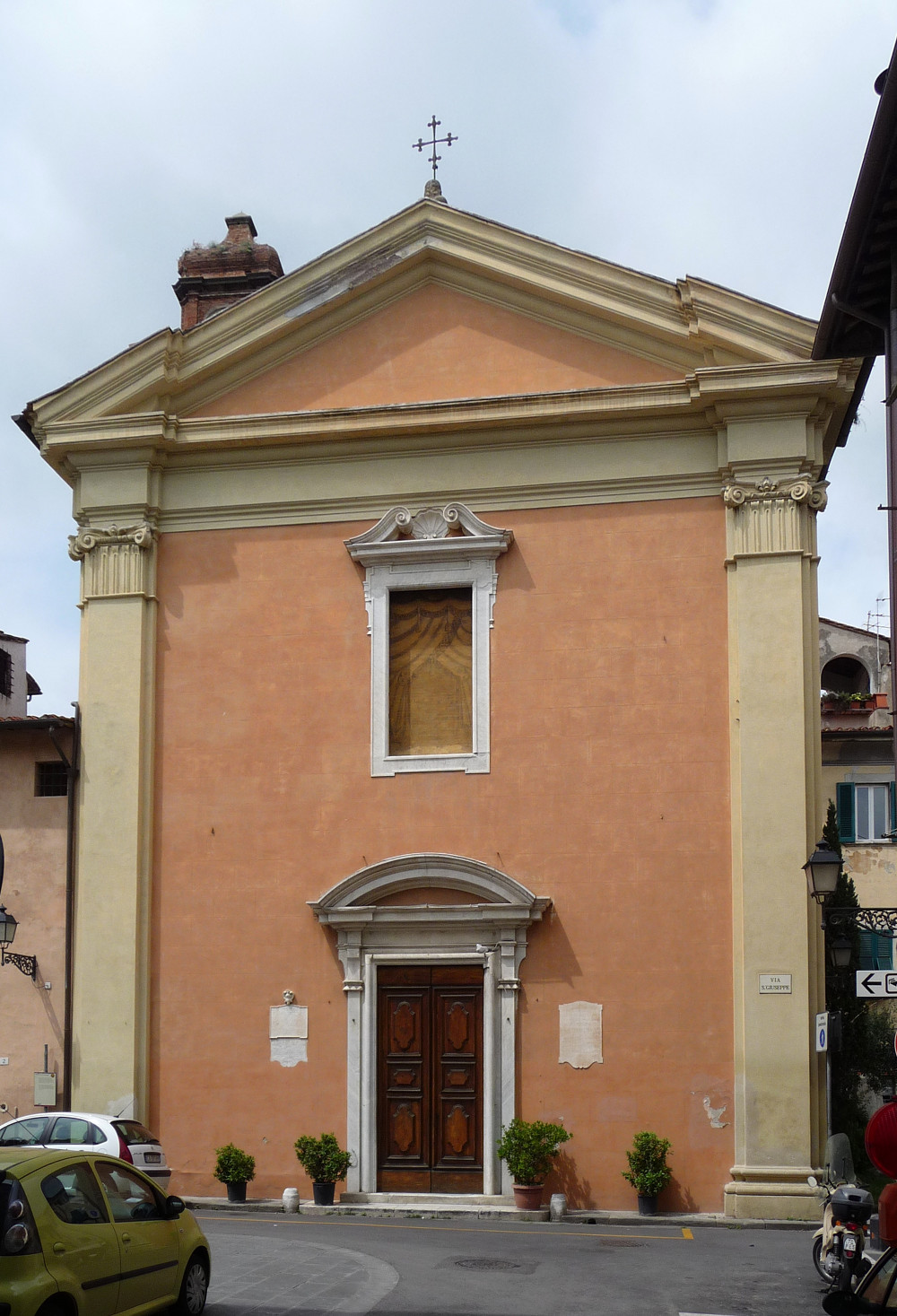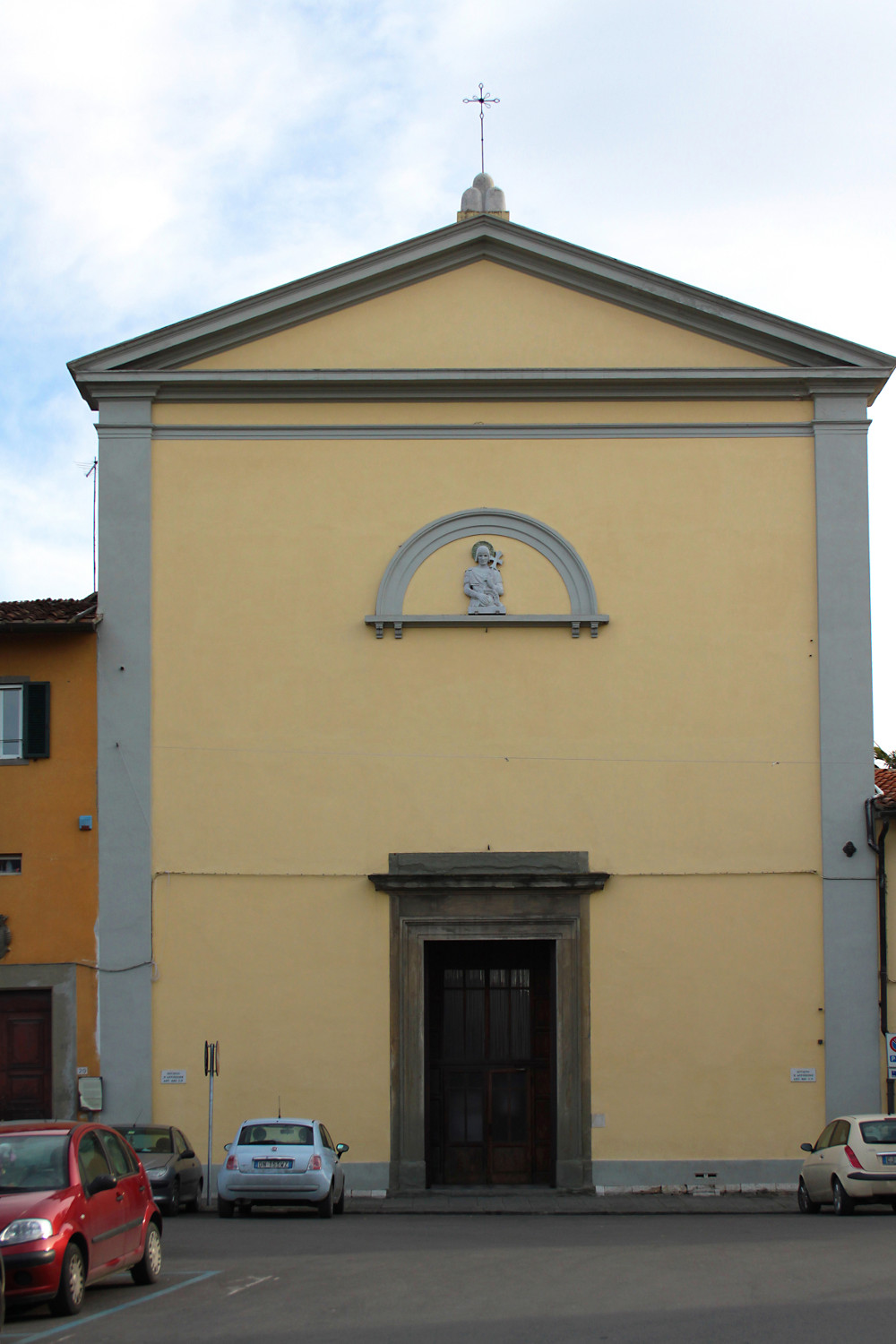Via S. Maria, meridione

Walking southwards along via S. Maria towards the Arno, you can admire many historical buildings, evidence of the development of this part of the city beginning in the 12th century.
On the corner of via Galvani is palazzo Agonigi da Scorno. It is a 12th century building re-adapted in modern times. It was rebuilt to a great extent after damage in the second world war. Two large stone arches of the original tower house are visible in the facade and a few remaining traces indicate there were probably others above. The two-light mullioned windows on the first floor were reconstructed when the building was renovated by Sampaolesi, and the ground floor pilaster was replaced by an ancient column and a marble capital attributed to Biduino.
A little further on is the Miniati-Mazzarosa building, the result of combiningseveral houses dating from the mid 12th to 14th centuries. The oldest houses are those on via S. Maria and were built during the rapid urban expansion in this area, where many furriers worked. The building has had several renovations over the centuries, including the mid 19th century windows inserted into the large pointed arches of the facade.
On the same side of the street is palazzo Curini Quaratesi, with an elegant facade designed by the Flemish artist Francavilla in the late 16th century; above the door is a marble bust of Ferdinand I de’ Medici.
Almost opposite is a building usually known as palazzo Ricci, although Collegio Ricci was actually on the west side of piazza Dante. This building too was made by joining several medieval buildings together, parts of which can be seen in the courtyard. The facades are in the Florentine 18th century style but already by the early 1800s, the building had mostly acquired it present appearance. After work directed by Severini in the 1960s it was taken over by Pisa University.
Near the end of the street is the palazzo delle Vedove (Widows’ Palace). During the middle ages it was the domus of the Bocci, built in a strategic position close to the Ponte Nuovo now no longer existing.
Originally the building was elongated with a porch; it was greatly modified during the Renaissance, but is still visible on the outside. The building was re-styled in the 1500s, and used by the “widows” of the Medici family, who entered it from the Royal Palace via an overhead closed bridge that still crosses the end of via S. Maria.

